Smart Tips for Maximizing Home Security with Door Hinges
Security door hinges play a crucial role in home protection. Homeowners often select a product of hinge that resists forced entry.
·Steel fixing frames on commercial doors increase resistance.
·Security hinges prevent hinge pin removal and cutting, while dog bolts lower vulnerability to tool-aided attacks.
What Makes Security Door Hinges Secure?
Strong Materials and Construction
Manufacturers select robust materials to ensure security door hinges provide maximum protection. Stainless steel, carbon steel, and galvanized steel offer superior strength and durability. The following table compares common materials used in high-security hinges:
| Material | Strength Rating | Advantages | Limitations | Typical Applications |
|---|---|---|---|---|
| Stainless Steel | Moderate to High | Corrosion resistance, durability | Higher cost, slightly less strength | Coastal gates, high-end doors |
| Carbon Steel / Iron | High | Mechanical strength, affordability | Prone to rust, requires treatment | Heavy-duty hinges, industrial applications |
| Galvanized Steel | Moderate | Rust protection, cost-effective | Coating thickness may vary | Outdoor gates, structural applications |
| Brass & Bronze | Low to Moderate | Corrosion resistance, aesthetic | Softer than steel, higher cost | Decorative doors, architectural hardware |
| Zinc Alloy | Low to Moderate | Moderate strength, economical | Not for heavy-duty applications | Cabinet doors, light garden gates |
| Aluminum | Low | Lightweight, rust-resistant | Lower strength, can dent | Decorative gates, light interior doors |
| Composite / Nylon | Very Low | Corrosion-free, low maintenance | Low load capacity, UV degradation | Small gates, non-metallic applications |
Security door hinges often feature reinforced construction. Manufacturers use heavy gauge metals and advanced treatments to increase resistance to force. CE-marked hinges pass rigorous tests for static strength, deformation under load, overload resistance, and shear strength. Some models include interlocking tabs that prevent removal, even if someone tampers with the hinge pins
Tip: Homeowners should choose hinges made from high-strength materials for entry doors. This choice increases durability and reduces the risk of forced entry.
Tamper-Resistant Features
Tamper-resistant features play a vital role in the effectiveness of security door hinges. These features prevent intruders from removing or disabling the hinge mechanism. Common tamper-resistant elements include:
·Non-removable pins block easy removal from the outside.
·Concealed screws make it difficult to access the hinge mechanism.
·Interlocking leaves enhance the structural integrity of the hinge.
Tamper-resistant hinges withstand attempts to detach the door. Interlocking tabs and non-removable pins make forced entry much harder. High-quality hinges reinforce the door, increasing its resistance to break-ins.
Note: Tamper-resistant features are essential for exterior doors. They provide an extra layer of protection against unauthorized access.
Advanced Hinge Designs
Modern security door hinges incorporate advanced designs to improve safety and convenience. Manufacturers offer products with heavy gauge frames, marine-grade meshes, and pick-proof locks. The table below highlights several advanced hinge designs available for residential security doors:
| Product Name | Features |
|---|---|
| Security Hinged Screen Doors | Heavy gauge frames, marine-grade meshes, various designs and colors for safety and style. |
| Kawili Security Hinged Screen Door | Heavy gauge aluminum frame, marine-grade stainless steel mesh, pick-proof lock, customizable. |
| Ikaika Security Hinged Screen Door | Wide aluminum frame, black epoxy coated stainless steel mesh, customizable colors, double door options. |
| Malama Security Hinged Screen Door | Tamper-resistant hinges, virtually pick-proof lock, standard or custom colors. |
| Wesmarc Smart Security Doors | Advanced hinge technology for 180° opening and 3D adjustment for precise installation. |
| High-End Security Doors | Non-removable or tamper-proof pins, three or more hinges for weight distribution, concealed hinges for added security. |
Advanced hinge designs use hydraulic damping technology to control motion speed and ensure smooth closure. High-grade stainless steel construction offers superior rust resistance and strength. Designs that prevent pin removal further enhance protection against tampering and forced entry.
Callout: Advanced hinge designs not only improve security but also add convenience and style to residential doors.
Types of Security Door Hinges
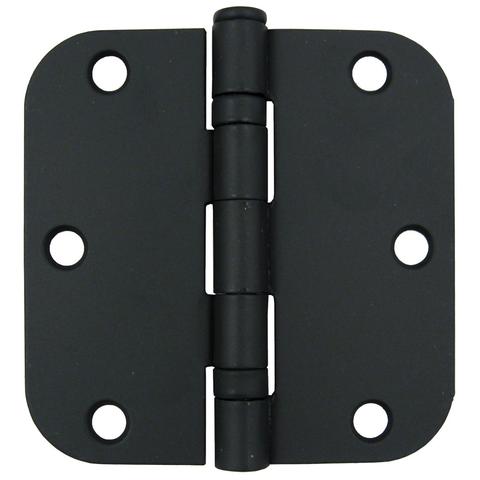
Security Hinges
Security hinges serve as the foundation for high-security areas. Manufacturers design these hinges with tamper-resistant features such as non-removable pins, interlocking studs, and hidden set screws. These features prevent doors from being lifted off their hinges, even if someone compromises the pin.
| Feature | Description |
|---|---|
| Non-removable Pins (NRP) | Prevents the hinge pin from being removed when the door is closed |
| Hospital Tips | Sloped knuckles that prevent items from being hung on the hinge |
| Security Studs | Projections that interlock when the door is closed |
| Concealed Hinges | Hidden from view when the door is closed |
Ball Bearing Hinges
Ball bearing hinges enhance door security by increasing durability and strength. These hinges reinforce the weakest point of a door, providing peace of mind for homeowners. Selecting ball bearing hinges with non-removable pins further protects exterior doors from unauthorized removal.
Concealed Hinges
Concealed hinges remain hidden within the door and frame, making them less accessible to intruders.
·This design reduces the risk of tampering or forced entry.
·Concealed hinges offer enhanced security for exterior doors and cabinets that store valuable items.
·The hidden design makes them less susceptible to tampering compared to exposed hinges.
Self-Closing Hinges
Self-closing hinges ensure doors close automatically, preventing unauthorized access.
·These hinges are crucial for exterior doors, which serve as primary entry points.
·They help doors close tightly, reducing the risk of being left ajar.
·Interior doors also benefit by maintaining privacy and security in restricted areas.
Reinforced Hinges
Reinforced hinges contribute to the structural integrity of security door hinges.
·Reinforcement plates around the hinge area prevent the frame from splitting or breaking under force.
·High-quality, well-installed hinges make doors more resistant to tampering and forced entry.
Tip: Selecting the right hinge type strengthens entry points and improves overall home security.
Smart Tips for Maximizing Security with Door Hinges
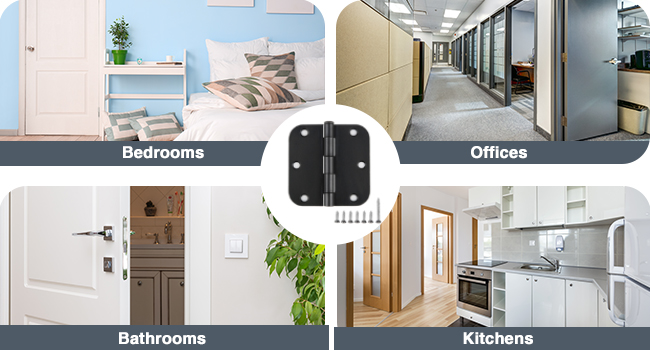
Choosing the Right Hinge for Your Door
Selecting the correct hinge for each door type ensures both safety and durability. The weight and function of the door determine the best hinge choice. Heavier doors require robust ball bearing or commercial-grade hinges, while lighter doors can use standard or decorative options. The following table outlines key criteria for matching hinges to door types:
| Criteria | Heavy Doors (Over 50 lbs) | Medium-weight Doors | Lightweight Doors |
|---|---|---|---|
| Recommended Hinges | Ball bearing butt hinges, heavy-duty commercial hinges, continuous hinges | Standard ball bearing butt hinges, medium-duty commercial grade hinges | Standard butt hinges, decorative hinges |
| Functional Requirements | Security hinges with non-removable pins, continuous hinges | Standard hinges | Decorative hinges |
| Aesthetics | Architectural grade finishes | Concealed cabinet hinges | Decorative butt hinges |
| Installation Parameters | New construction options | Retrofit considerations | Basic installation options |
Matching hinge type to door material also impacts overall security. Strong materials like stainless steel, brass, or bronze offer durability and resistance to wear. Larger doors need stronger, larger hinges. Exterior doors benefit from at least three hinges for added stability. Non-removable pins and interlocking tabs further protect against tampering. Reinforcement plates around hinges help prevent frame splitting.
Tip: Always match hinge size and strength to the door’s weight and use. This approach prevents sagging and increases resistance to forced entry.
Proper Installation Techniques
Correct installation of security door hinges maximizes protection. Installers should align the door and frame precisely to prevent sagging. Long, sturdy screws anchor hinges deep into the frame, creating a solid connection. Reinforcing the door frame with a metal plate around the hinge area adds another layer of defense.
·Align the door and frame to avoid gaps or sagging.
·Use 3-inch screws to secure hinges into wall studs.
·Add reinforcement plates to strengthen the hinge area.
·Tighten all screws during installation to prevent loosening over time.
Note: Proper installation not only improves security but also extends the life of both the door and the hinges.
Regular Inspection and Maintenance
Routine inspection and maintenance keep security door hinges functioning at their best. Homeowners should check locks, hinges, and seals for signs of damage or wear. Inspect the door frame for loose, missing, or damaged screws. Look for rust or corrosion, especially in humid environments. Clean the door and its components during each inspection. Lubricate hinges and mechanical parts as needed.
·Lubricate hinges annually to prevent squeaking and wear.
·Clean with non-corrosive products to avoid damaging finishes.
·Inspect for wear every few months, or more often for high-use or exterior doors.
·Replace damaged or worn components promptly.
Callout: Regular maintenance ensures hinges remain secure and extends their lifespan.
Upgrading Existing Hinges
Upgrading older hinges improves home security without replacing the entire door. Replacing factory screws with 3-inch screws increases pull resistance and prevents sagging. Adding a hinge reinforcement plate strengthens both the hinge and the door frame. Installing security hinges with non-removable pins prevents easy removal of the door.
Common challenges include short screws that do not reach wall studs, loose hinges from frequent use, exposed hinge pins on out-swing doors, and inadequate hinge size for heavy doors. Addressing these issues with longer screws, reinforcement plates, and security hinges significantly boosts protection.
·Replace short screws with longer, sturdier ones.
·Add reinforcement plates to the hinge area.
·Use security hinges with non-removable pins.
·Check hinge size and upgrade if necessary for heavier doors.
Tip: Simple upgrades to existing hinges can greatly enhance the security of any entryway.
Common Mistakes to Avoid with Security Door Hinges
Using Weak or Incompatible Hinges
Many homeowners overlook the importance of selecting hinges that match the strength and weight of their doors. Hinges made from weak materials, such as low-grade metals, cannot support heavy doors and may fail under pressure. Steel or iron hinges provide better durability and security. Compatibility with the existing security system also matters. Mismatched hinges—using different types or brands—can cause uneven weight distribution, which reduces overall security. Ignoring the door’s weight and choosing lightweight hinges for heavy doors often leads to sagging or misalignment.
Tip: Always check that hinges are made from strong materials and are suitable for both the door’s weight and the home’s security needs.
Poor Installation Practices
Improper installation remains a leading cause of hinge failure. Placing hinges too close to or too far from the door edge affects stability and swing. Failing to consider the door’s swing direction can create vulnerabilities. Over-tightening screws may strip holes or warp hinge plates, while skipping pilot holes increases the risk of wood splitting. Using low-quality hinges or incorrect door sizes can result in doors that do not close properly or even fall off, posing safety hazards. Accidents sometimes occur when invisible hinges break under the weight of a heavy door.
·Always drill pilot holes before installing screws.
·Use the correct number and type of hinges for the door’s size and weight.
Neglecting Maintenance
Neglecting regular maintenance shortens the lifespan of security door hinges and can lead to costly repairs. Without routine checks, minor issues like loose screws or early signs of rust go unnoticed and escalate into major problems. Hinges that lack lubrication become stiff, squeak, or may even fail to operate. Regular cleaning and lubrication reduce friction and wear, while prompt tightening of loose screws maintains stability. Early detection of damage prevents serious structural issues and ensures doors remain safe and functional.
Note: Consistent maintenance not only extends hinge life but also keeps entry points secure and efficient.
Secure door hinges offer a powerful boost to home safety.
·Self-closing hinges keep doors shut, help contain fires, and prevent injuries for children and pets.
·Upgraded hinges with non-removable pins have stopped break-ins, while weak, rusted hinges have failed.
Small improvements in hinge selection and care protect property and peace of mind.
FAQ
What is the best way to secure out-swing doors with exposed hinges?
Install security hinges with non-removable pins. Reinforcement plates and long screws also help prevent forced removal and increase door strength.
How often should homeowners inspect and maintain door hinges?
Homeowners should inspect hinges every three to six months. Lubricate moving parts and check for rust, loose screws, or visible damage during each inspection.
Can existing door hinges be upgraded without replacing the entire door?
Yes. Replace standard hinges with security models, use longer screws, and add reinforcement plates. These upgrades improve security without needing a new door.
Related articles
-
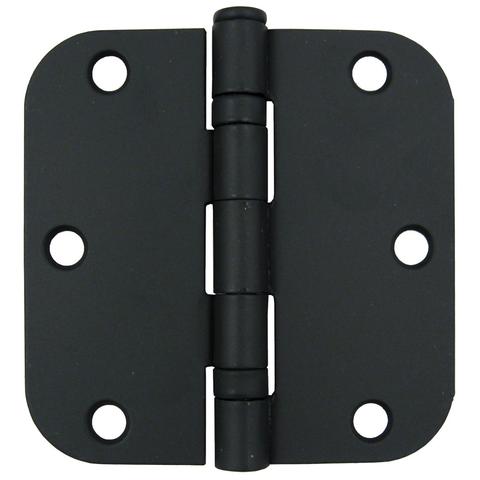
Why Do Black Cabinet Hinges Fit Every Home
Black cabinet hinges fit every home by blending with any style, offering durability, and making cabinets easy to maintain.Sep-11-2025 Learn More >> -
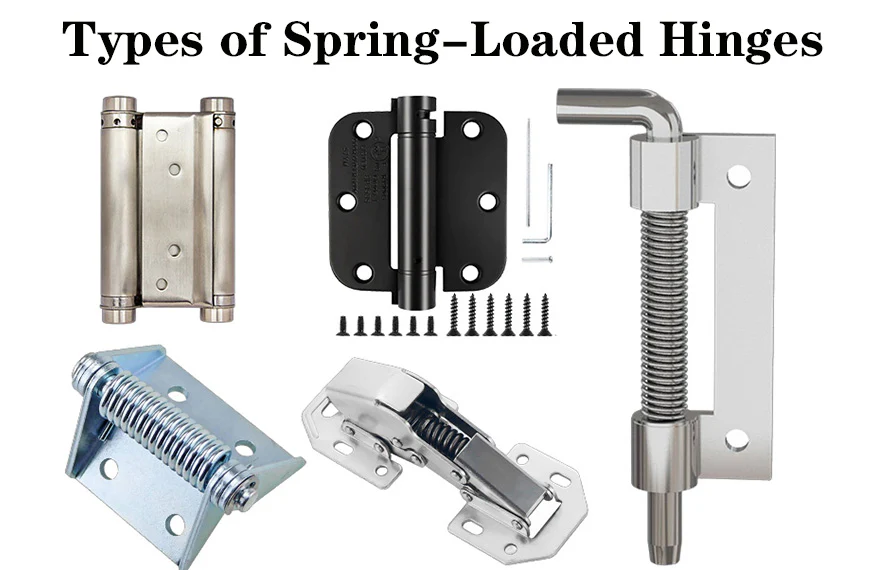
Why Should You Choose Spring Loaded Hinges for Modern Doors
Sep-11-2025 Learn More >> -
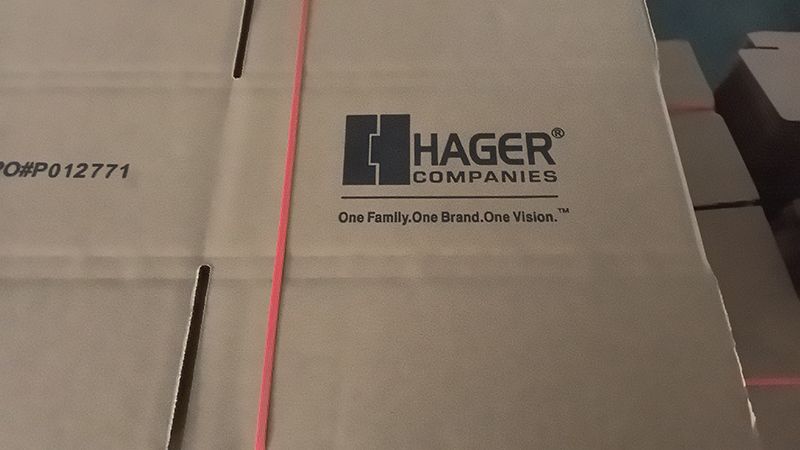
TDC and Hager’s Top 3 Hinge Innovations
TDC and Hager deliver three standout hinge innovations that transform the market: rust-proof heavy-duty hinges, quiet close technology, and modern designer finishes. These hinges solve key industry problems by boosting durability, reducing noise, and elevating design.Sep-11-2025 Learn More >>
To Provide You with Better Service

Contact
Tel: +8613325838282
Add: 6265 Providence Way Eastvale,CA 92880




